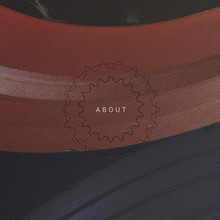Polytetrafluoroethylene (PTFE) is also known as Teflon, a non-stick material frequently used in cookware and protective clothing. There are a host of industrial uses for this versatile material, too. PTFE is widely used in the aerospace, food and drink manufacturing, pharmaceuticals, and telecommunications sectors, to name but a few.
Pure PTFE is a low friction substance that can withstand huge changes in temperature, making it great for cookware such as non-stick pans. Physically, PTFE is highly flexible as well as extremely dense; therefore, a PTFE coating on machine parts makes them far more durable. Chemically, it is extremely unreactive and insoluble in most chemicals and is itself non-toxic, conferring further advantages in contexts such as laboratories, medicine (e.g. as a coating for catheters), and food manufacturing. Taken together, these properties make PTFE an extremely useful material for a wide range of applications across practically all industrial sectors (see our previous blog post for more details on raw PTFE.)
Because it is highly flexible, PTFE can creep and deform under heavy loads. This potential disadvantage can be obviated by adding a filler in order to benefit from the properties of both materials. Fillers can also add properties such as improved thermal conductivity, for applications that demand good heat dissipation. The most common filler material is glass, but other materials confer specific advantages for certain applications. These alternative additives include carbon, graphite, stainless steel, molybdenum disulfide, bronze, and polyimide.
1. Glass filled PTFE
Adding glass to PTFE makes it stronger and more durable, as well as reducing flexibility and likelihood of creep. Glass filled PTFE can operate at the same temperature range as virgin PTFE and is similarly chemically inert. Fluorotec offers Glass filled PTFE ranging from 5% to 60% glass content. Increasing the Glass filler content results in an increase in durability and compressive strength. Optionally, glass filled PTFE can be inert gas sintered. This further reduces the material's tendency to creep as well as its porosity. Glass filled PTFE is more abrasive than Virgin PTFE, meaning that it can be abrasive to adjacent surfaces.
2. Carbon filled PTFE
Carbon filled PTFE benefits from improved compressive strength, reduced deformation under heavy loads, and better wear resistance than virgin PTFE. Because carbon is conductive, it is suitable for applications which require higher thermal conductivity than PTFE alone and also becomes static dissipative due to its electrical conductivity. Carbon may be added in the form of powder or fibre. It can be abrasive, but not to the same extent as glass.
3. Graphite filled PTFE
Graphite filled PTFE provides some similar benefits to 'normal' carbon filled PTFE but without the greatly improved wear resistance. Graphite lowers the coefficient of friction and Graphite filled PTFE has excellent self lubricating properties. It can be combined with either carbon or glass or even both to reap the combined benefits of all three fillers.
4. Stainless steel filled PTFE
With the addition of stainless steel powder, PTFE acquires enhanced strength and the ability to withstand loads. It works excellently at high temperatures, making stainless steel filled PTFE a good choice for applications using steam and hot liquids. This type of PTFE is suitable for many mechanical uses, as well as in the food and drink industry. It is exceedingly hard-wearing, to the extent that it could cause wear on adjacent surfaces, which should be taken into account.
5. Molybdenum disulfide (MoS2) filled PTFE
Often used together with glass or bronze, Molybdenum disulfide (MoS2) as a PTFE filler results in a more slippery and harder material. MoS2 also improves compression and wear resistance. The resulting material is very useful for dynamic seals.
6. Bronze filled PTFE
If your application demands good thermal and electrical conductivity, bronze filled PTFE may be ideal. Adding bronze to PTFE also improves wear resistance. However, bronze attenuates the non-stick properties and chemical inertness of the PTFE, so you should consider whether these are important for your particular situation. Other metals such as titanium, nickel, or stainless steel (as described above) may also be chosen as fillers due to their specific properties.
7. Polyimide filled PTFE
Polyimide refers to a class of synthetic polymers. Adding polyimide produces a PTFE compound that is lower in friction than all of those previously described. It is non-abrasive, making it a good choice for applications involving softer mating surfaces like steel, aluminium, or other plastics. Polyimide filled PTFE therefore suits dry running and stop-start applications particularly well. However, polyimide is the priciest of the PTFE fillers.
In summary, filled PTFE comes in many forms, each with unique benefits. Raw PTFE is already a versatile and extremely useful substance, and it can be further improved and tailored by the addition of various fillers. Several aspects should be considered when sourcing filled PTFE for a specific application. Does it require increased or reduced friction? What about thermal conductivity? Is compressive strength absolutely key? Different quantities and grades of filler can be added, and different fillers can even be combined to result in an even better solution. AT AFT Fluorotec we can offer bespoke materials to suit almost any application requirements and are not limited to the ‘standard’ well know grades.



